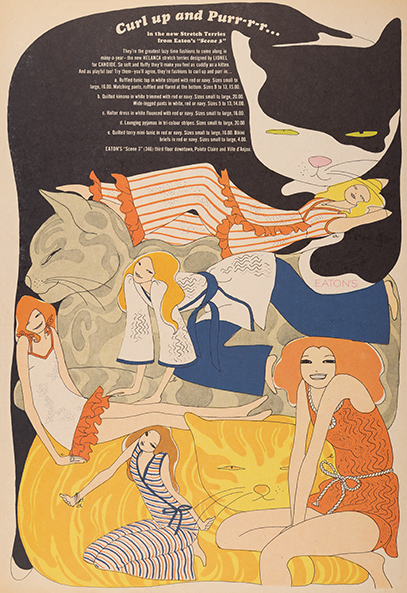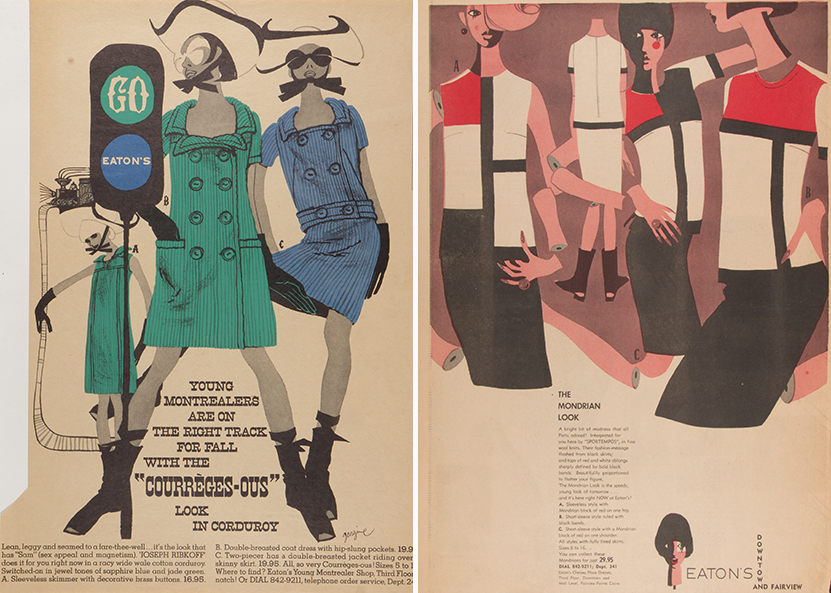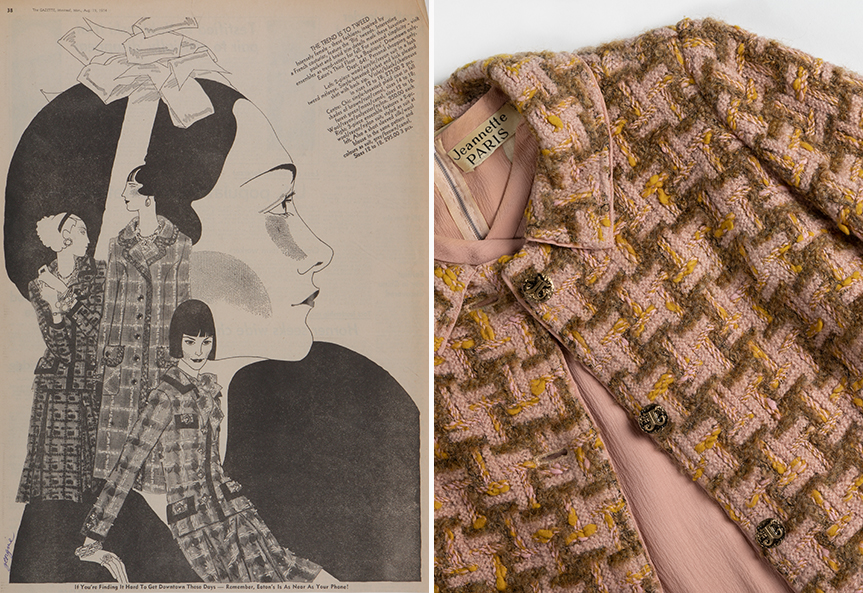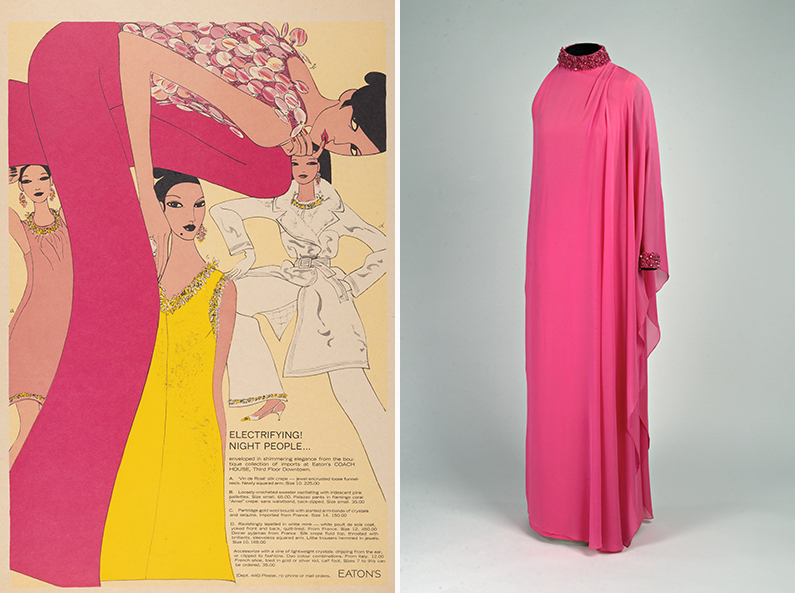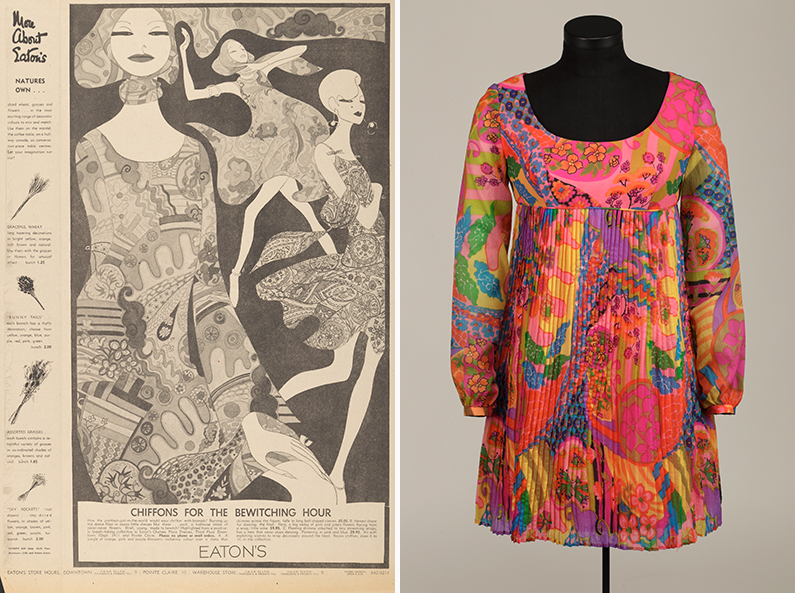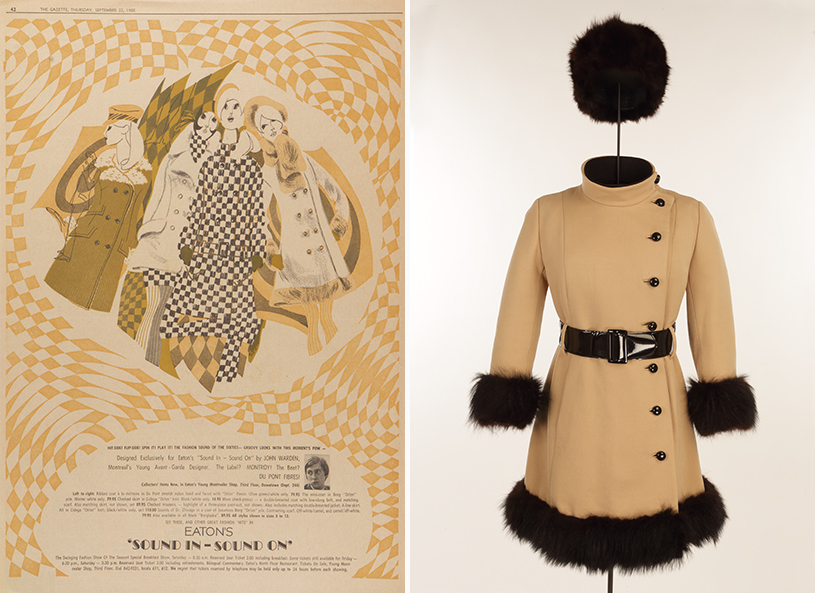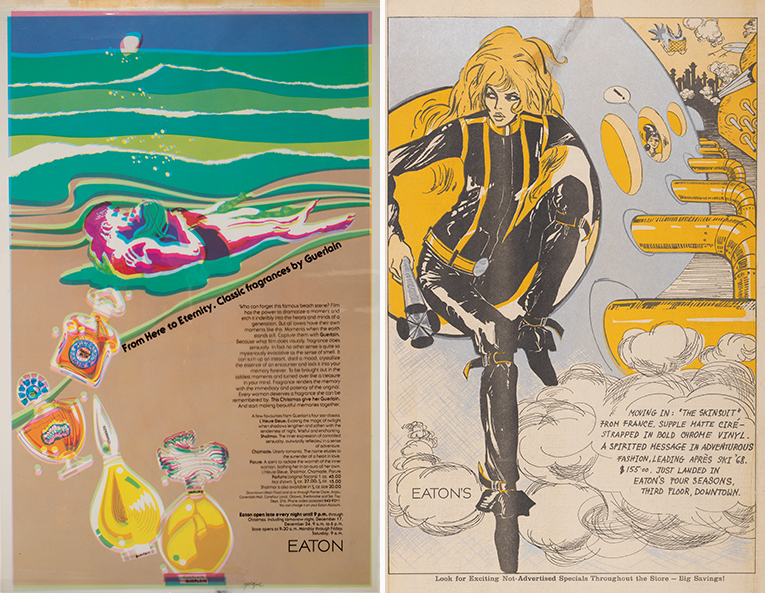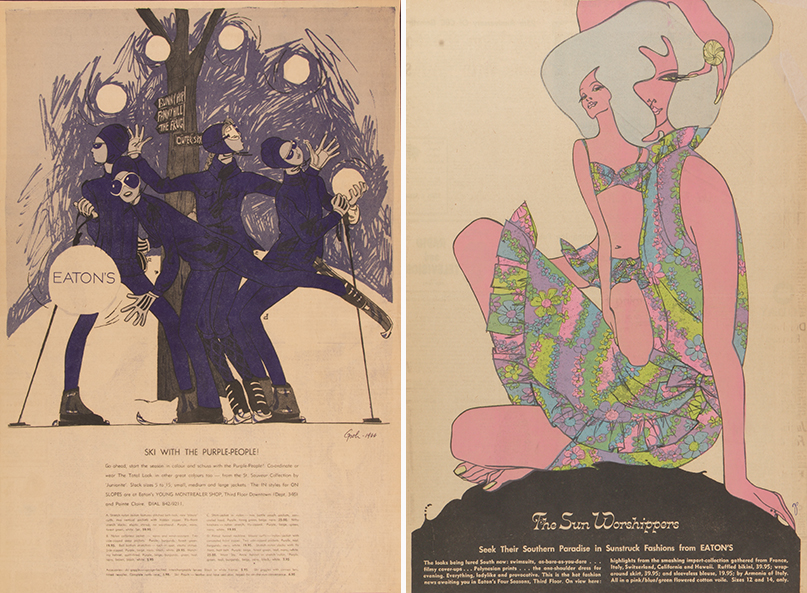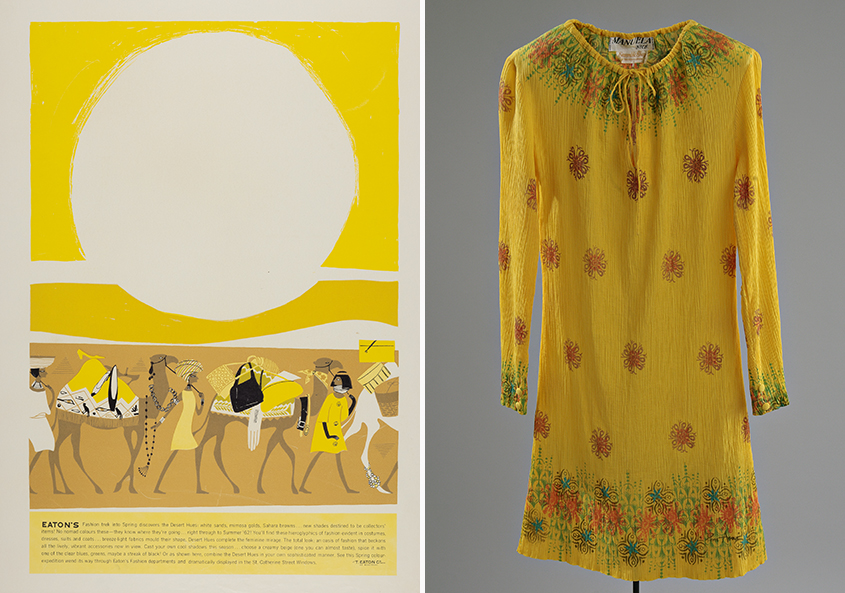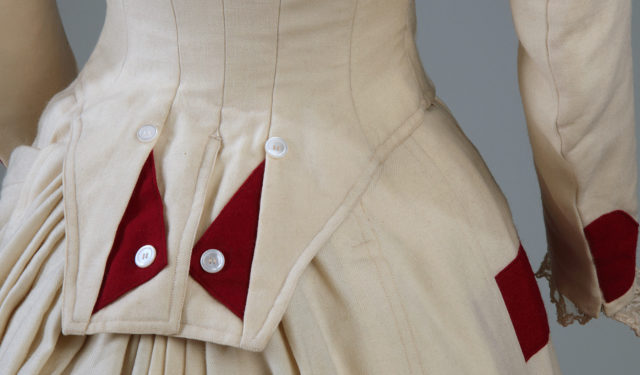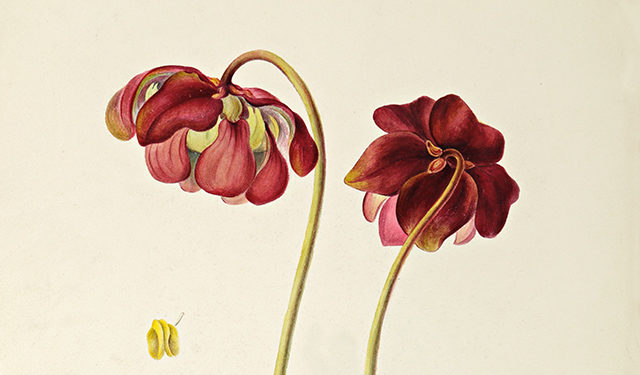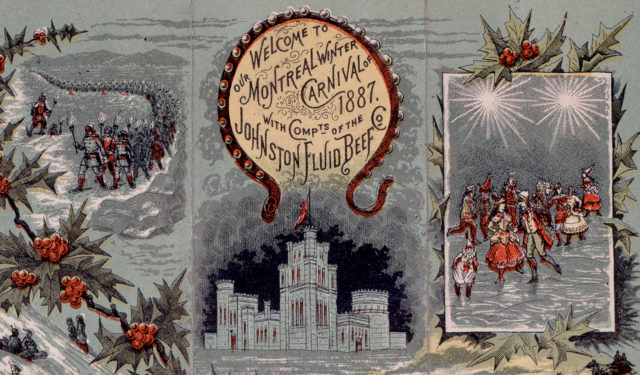Artists of Fashion
Discover the fabulous Eaton’s advertisements of Eugenie Groh and Georgine Strathy from the 1950s to 1970s.
One of my duties as an Associate Curator at the McCord Stewart Museum is to manage donations to the Dress, Fashion & Textiles collection. It is an exciting aspect of the job, as you never know what types of objects will be offered, and in 2017, a fantastic donation came our way.
After the death of celebrated commercial artist Eugenie Groh (b. 1919, Chrast, present-day Czech Republic, d. 2017, Montreal), her family contacted the Museum about her archive of Montreal Gazette newspaper advertisements she illustrated for the city’s downtown Eaton’s department store from the early 1950s to the 1970s. Well aware of her groundbreaking art, I went to Groh’s Westmount apartment to meet her family and arrange for the archive to be transported to the Museum.
While surveying the extensive collection of ads, I noticed an older woman in the apartment doing the same thing. She was dressed in stylish black from head to toe, with a sleek ponytail and large statement glasses, and I thought, “She looks like an artist.” I introduced myself, and found I was speaking with Georgine Strathy (b. 1931, Winnipeg, Manitoba), who as a young freelance illustrator worked alongside Groh and art director Jack Parker in Eaton’s Montreal art department. The trio were responsible for some of the most creative, avant-garde, internationally celebrated illustrated fashion advertisements of the mid-20th century.
Unfortunately, I never had the opportunity to meet Groh, who by all accounts was a fabulously chic and sophisticated woman, with an enormous talent and relentless work ethic. Luckily, in 2017 I was able to spend time with Strathy, who also offered her personal archive of Eaton’s ads to the Museum, as well as commercial work she had done for her company Strathygraphe.
| Discover Eugenie Groh and Georgine Strathy’s fashion illustrations on Online Collections |
Strathy is cool, funny and incredibly generous. She reflected on how fortunate she was as a young artist to have been mentored by Groh, who introduced her to the Art Deco and Art Nouveau aesthetic movements, along with the work of Czech painter and graphic artist Alphonse Mucha, all of which had a profound impact on her art practice. The two women became lifelong friends. In addition to their shared passion for drawing, both were avid cat lovers and feline figures frequently appeared in Eaton’s ads.
In terms of the advertisements themselves, there is little to say that has not already been said by artist and educator Katherine Bosnitch. Her thorough exploration of the history, stylistic themes and technical innovation behind the artworks, “A Little on the Wild Side: Eaton’s Prestige Fashion Advertising Published in the Montreal Gazette, 1952-1972,” was included in Alexandra Palmer’s 2004 book Fashion: A Canadian Perspective. However, these advertisements have enabled me, as a fashion curator, to develop a better understanding of the inner workings of Eaton’s downtown Montreal store and to contextualize garments in the Museum’s collection dating from the 1960s.
HAUTE COUTURE COPIES
Eaton’s downtown Montreal store had a diverse range of in-store boutiques that catered to many different demographics and stocked stylish apparel for all price points. While the high-fashion boutiques sold expensive designer originals, many of the youth-centric shops offered affordable apparel copied from leading Parisian houses.
The two ads above present dresses made by mass-market manufacturers, the first ‘inspired’ by the André Courrèges Spring-Summer 1965 Haute Couture collection and the other by the iconic Yves Saint Laurent Mondrian dress from his Autumn-Winter Haute Couture collection of the same year.
Perhaps one of the most influential designer ensembles of the mid-to-late 20th century was the tweed Chanel skirt suit, which made its debut in the mid-1950s. The suit’s classic, modern simplicity meant that it not only appealed to working women, but could also be easily copied. The Groh and Strathy archives contain several examples of ‘Chanel-like’ suits in ads, but one from August 19, 1974, stands out. While the accompanying text vaguely describes the suits as “inspired by a French couturier,” Strathy’s reproduction of Horst P. Horst’s iconic 1937 photograph of Coco Chanel in the background makes the designer reference crystal clear.
The suits and coats in textured, large-scale woven tweed fabrics illustrated in the ad are stylistically similar to a Jeanette Paris suit found in the Museum’s collection, dated to the mid-1960s. This Jeanette suit sports an Ensemble Shop label, making it from one of Eaton’s high-end boutiques, which speaks to the pervasiveness of the Chanel style over many decades and across all price points.
EUROPEAN IMPORTS
Groh worked almost exclusively on ads for Eaton’s international high-fashion boutiques: the Ensemble Shop, the New Orleans Town House, and the Coach House. This example presents European imports available at the Coach House, which sold Austrian, Swiss, and Spanish designers, amongst others.1
Published on November 8, 1966, Groh’s illustration features stunning, avant-garde eveningwear that bears a remarkable likeness to a 1968 pink Marty Morell evening dress in the McCord Stewart’s collection. Morell was a Zurich-based Swiss designer active from the late 1950s to the late 1960s who was known for his high-end cocktail and eveningwear. Although the Museum’s dress bears an Ensemble Shop label and was not purchased at the Coach House, the combination of the garment and the ad show the type of high-style international apparel sold by Eaton’s from locales other than the established fashion centres of New York, Paris, London and (at the time) Florence.
PSYCHEDELIC STYLES
This printed synthetic crepe dress is very typical of late 1960s youthful fashion, with its psychedelic print and very short skirt. The donor’s husband bought it for her, and she recalled wearing it to Expo 67. She did not remember from what store it was purchased, and it has no maker label.
The garments illustrated in Groh’s ad, published in the Montreal Gazette on August 19, 1966, bear a striking resemblance to this dress, with the text describing chiffon fabrics (a type of crepe) printed with a “hothouse blaze of never-never flowers.” Although we cannot definitively say that this dress came from Eaton’s, the uncanny similarities between the extant garment and those illustrated in the ad make for a strong case that it was possibly purchased at the department store.
TEENAGE BOUTIQUES AND FASHIONABLE FILMS
Strathy, a self-described feminist and beatnik, was part of Montreal’s underground scene in the 1960s, and her illustrations for Eaton’s in-store teenage boutiques like the Young Montrealer Shop tend to show links to the counterculture of the era, often depicting rock stars, Mods and hippies.
This ad is a wonderful example of her bohemian leanings, showing youthful figures in “Groovy Looks” by hip local designer John Warden, surrounded by psychedelic art-inspired motifs. This particular ad was the first of three published September 22-24, 1966, promoting Warden’s youth-driven “Swinging Fashion Show of the Season” at the department store’s legendary 9th floor Art Deco restaurant.
The McCord Stewart Museum holds the John Warden Fonds (P741) and actively collects his apparel, including the above coat purchased at Eaton’s Galeries d’Anjou store in 1968. Although not identical, the coat shows a stylistic similarity to the example depicted to the far right in the ad, described as inspired by the 1965 film Dr. Zhivago. The wardrobes of actors Julie Christie and Geraldine Chaplin caused a considerable stir in the fashion press of the era, with many designers incorporating fur, elements of Russian military apparel and folk costume into their collections. This fur-trimmed Warden coat bears witness to the manner in which hit movies like Dr. Zhivago had a considerable impact on fashion throughout the 20th century.
Iconic films of the mid-20th century made occasional appearances in Groh and Strathy’s Eaton’s advertisements. The infamous beach kissing scene between actors Burt Lancaster and Deborah Kerr in From Here to Eternity (1953) served as the backdrop for an early 1960’s Guerlain perfume ad. Roger Vadim’s Barbarella (1968) was undoubtedly the inspiration behind Groh’s illustration for futuristic après-ski wear, with the model channelling the film’s star, Jane Fonda.
THE JET SET AND GLAMOUROUS VACATION APPAREL
By the late 1950s, commercial airplane travel had become widespread and the glamourous jet-set lifestyle of the wealthy became a recurring theme of Groh and Strathy’s illustrations. Throughout the 1960s, ads regularly featured stylish downhill skiwear and fashionable beach and cruise wardrobes from Israel, California, Hawaii, Italy and the south of France.
The collection holds one such beach cover-up dress, bought at Eaton’s Ensemble Shop in 1968 and bearing a label that reads “Manuela, Nice.” Manuela was a Cote d’Azur-based independent designer fashion brand known for colourful, chic beach and resort wear. Aesthetically, this mini dress complements an Egyptian-themed Groh ad published on February 19, 1962. The ad centres on a huge sun and text describing summer fashion in desert hues of “white sands, mimosa golds and Sahara browns,” which echo the dress’s sunny yellow and warm brown colours and elements resembling abstract sunburst motifs.
These examples illustrate the very first connections made between Groh and Strathy’s archives and the Eaton’s apparel found in the Museum’s Dress, Fashion and Textiles collection. With time and further research, these stylish ads will undoubtedly further enrich our understanding of our fashion holdings, and the fascinating history of Montreal’s vibrant downtown Eaton’s department store.
NOTES
1. Katherine Bosnitch, “A Little on the Wild Side: Eaton’s Prestige Fashion Advertising Published in the Montreal Gazette, 1952-1972,” in Fashion: A Canadian Perspective, ed. Alexandra Palmer (Toronto: University of Toronto Press, 2004), p. 341.

